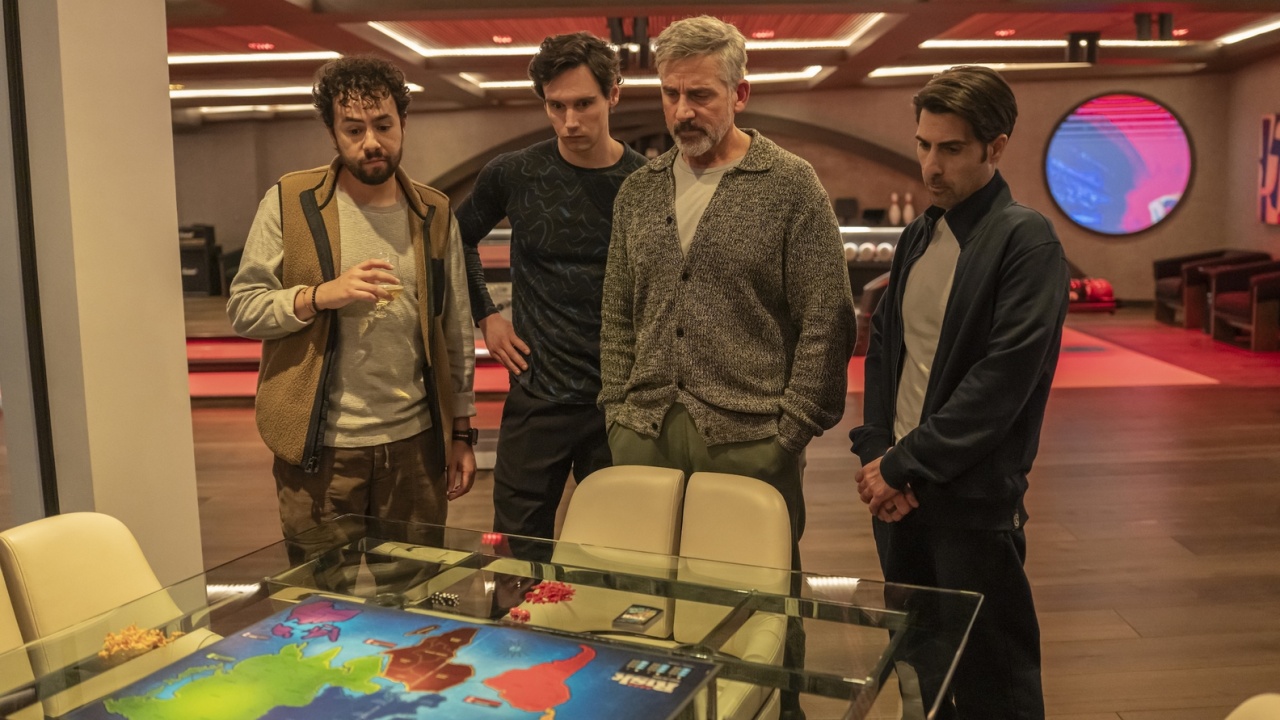‘For 90% of viewers, Veo 3 is already indiscernible from real, human content’: I talked to an AI deepfake expert about how we can avoid a future of AI control

Have you heard of the film Mountainhead yet? It skipped cinemas and premiered on Max on May 31 instead.
It’s about four tech billionaires who convene at a luxury ski lodge called Mountainhead (named after Ayn Rand’s novel, The Fountainhead) for their annual get together, where they remain isolated as the world around them descends into chaos and violence, largely thanks to the hyper-realistic deepfake AI videos that their software has helped enable and made freely available to the general public.
Once their AI video-generating software was released, people immediately started to use it in the worst way possible, causing looting, riots, gang warfare, and the economies of entire countries to collapse.
While we hear of this going on in the background, via news reports, the tech bros seem more concerned with who has the largest number in their bank account than the post-apocalyptic world they have ushered in.
The characters in Mountainhead are obviously parodies of today’s tech leaders, Musk, Bezos, Altman, and Zuckerberg, but rather than a gentle comedy roast of Silicon Valley’s finest, Mountainhead is more of a full-on flamethrower-to-the-face, scorched earth, assault on them that leaves only ashes behind.
Could it happen here?
Mountainhead is one of the best Max movies around at the moment, with the film currently sitting at a very respectable 78% rating on Rotten Tomatoes.
Given that platforms like Sora and Veo 3, which are capable of generating realistic AI videos, are available right now, I started to wonder how likely it is that Mountainhead's nightmare scenario could actually happen in real life.
Sign up for breaking news, reviews, opinion, top tech deals, and more.
To put my mind at rest, I talked to an AI deepfake expert.
He did not put my mind at rest. Instead, I’m starting to wonder how long we've got left.
Creating the chaos burger
“Disinformation doesn’t need to be sophisticated to create chaos”, says Ari Abelson, co-founder of OpenOrigins, a company that specializes in proving images and videos are real and human-created. “Even shallowfake campaigns, like the video of Nancy Pelosi that was slowed down to appear as if she’s slurring, create moments of uncertainty.”
Of course, since the fake viral Nancy Pelosi video was released, we have seen the emergence of powerful mass-market AI video creation tools, such as Sora from OpenAI and Veo 3 from Google.
“Veo 3 and other models are giving us a glimpse into a new generation of misinformation – un-fact-checkable disinformation, with content that’s so life-like it’s no longer distinguishable from reality. For 90% of viewers, Veo 3 is already indiscernible from real, human content. However, the big fear is that in the next 1-2 years, all content, human or otherwise, will come into question”, says Abelson.
“What’s necessary now is proving that content is real as it’s being created. If you’re a company that relies on human media, the name of the game is going to be proving it’s real and trustworthy at the point it’s captured.”
For example, news companies will need to rethink how they collect stories from sources, insurance companies will need to secure claims, and the military will need to know which sources are providing real evidence.
“Beyond this, archives of human content must be secured, so we have a tamper-proof, immutable record of authenticity and don’t lose our collective histories in the immense wave of AI slop”, says Abelson.
Think you couldn't be fooled by an AI video? Check out this video from The University of Oxford:
A photo posted by on
Inflection point
We appear to be at a scary inflection point where every form of communication through online sources could evaporate into a global mess if we can’t reliably determine what’s real from what's fake.
“If we don’t solve this, we enter a new phase where information sharing, history, news, and facts are decided by opinion rather than what’s actually happening", says Abelson. "We may live in a future of AI control.”
This makes me more worried than I was before, so I asked Abelson if there was a way out of this mess. Luckily, he does have ideas, and they are radical:
“We need to bifurcate the internet into a human and an agentic internet. This is a fundamental change in the underlying infrastructure. Society’s shared sense of reality is too important to be left to probabilistic algorithms and unreliable heuristics. We need people, companies, and governments to take content authenticity seriously, and a decentralized trust system to prove what’s human-created.”
A two-tier Internet, with one tier containing only human-made content, is an astonishing idea I hadn’t considered before.
If it’s possible, then it could be revolutionary, and it may be our only defence against the AI deepfakes that threaten to destroy our trust in anything we see online.
You might also like
- Sam Altman doesn’t think you should be worried about ChatGPT’s energy usage - reveals exactly how much power each prompt uses
- Google can now generate your AI videos more quickly than ever
- Sam Altman thinks superintelligence is within our grasp and makes 3 bold predictions for the future of AI and robotics: ‘We are past the event horizon’

Graham is the Senior Editor for AI at TechRadar. With over 25 years of experience in both online and print journalism, Graham has worked for various market-leading tech brands including Computeractive, PC Pro, iMore, MacFormat, Mac|Life, Maximum PC, and more. He specializes in reporting on everything to do with AI and has appeared on BBC TV shows like BBC One Breakfast and on Radio 4 commenting on the latest trends in tech. Graham has an honors degree in Computer Science and spends his spare time podcasting and blogging.
You must confirm your public display name before commenting
Please logout and then login again, you will then be prompted to enter your display name.